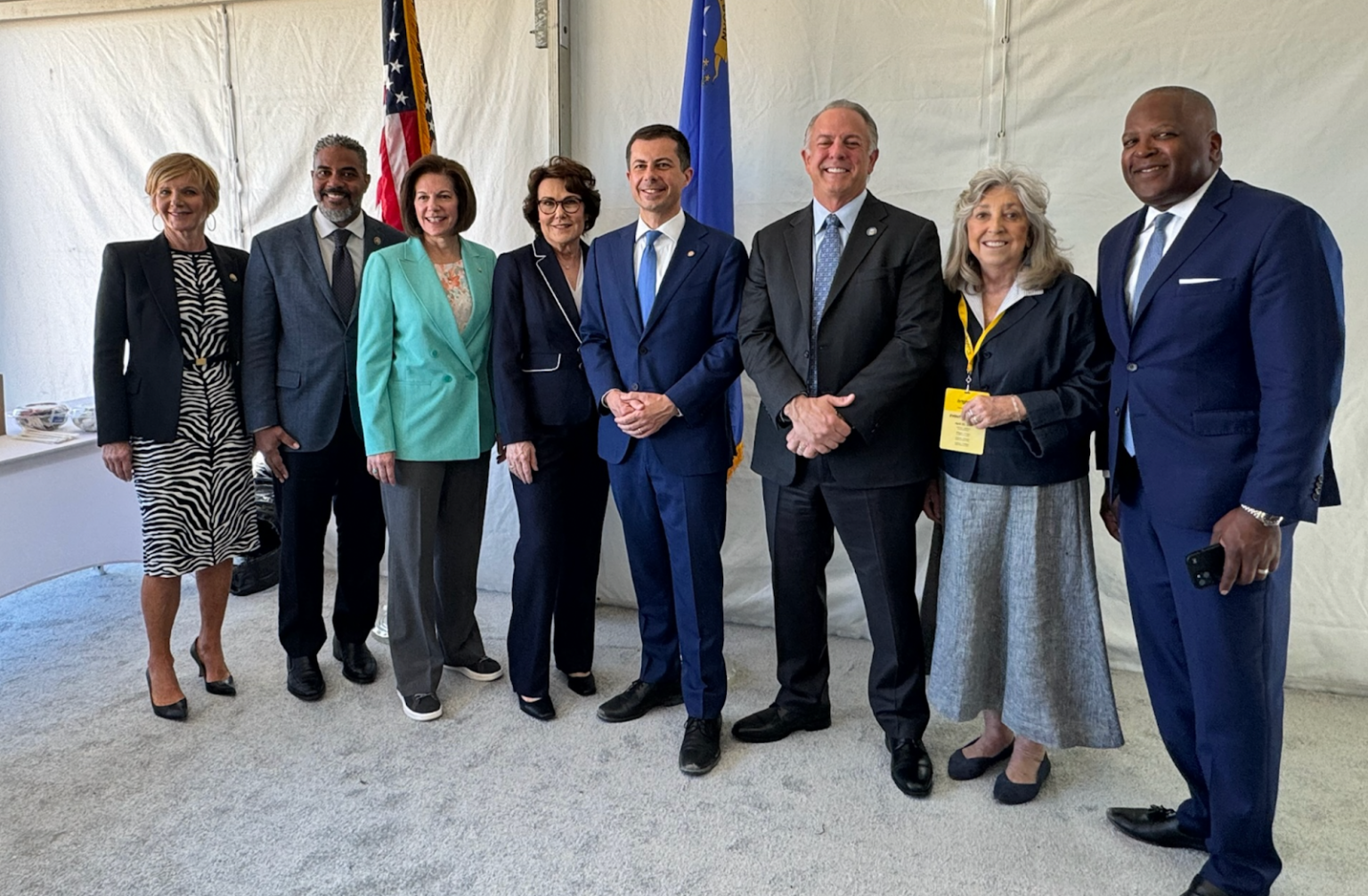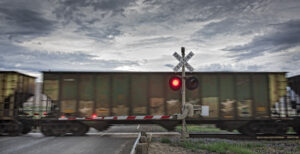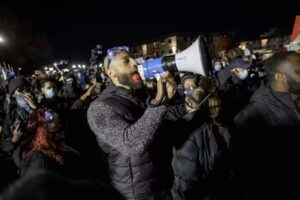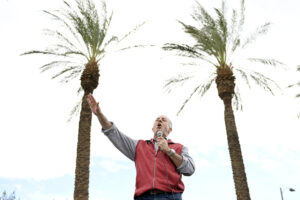Both of the state’s U.S. Senators, three-fourths of Nevada’s delegation in the U.S. House of Representatives, the former mayor of South Bend, Indiana, your governor, and several lesser mortals lined up together to get their pictures taken Monday at a groundbreaking ceremony for a high-speed train.
Scheduled to begin operating in 2028, the Brightline train is designed to carry people to Las Vegas from a parking lot in Rancho Cucamonga and safely carry them back again, preferably after they have spent a little more money than they had expected to but not so much more that they won’t come back to Las Vegas.
The train will hopefully alleviate Friday/Sunday traffic congestion on I-15, and also mean fewer automobile emissions.
But the most important thing about the train might not be what it means for Southern Nevada, Southern California, and the whole lot of not very much in between, but its role as a demonstration project for the nation.
“This is just the start,” the aforementioned former mayor of South Bend, Transportation Secretary Pete Buttigieg, said at the groundbreaking. “I am firmly convinced that once the first customer buys that first ticket – to ride true high-speed rail on American soil, there will be no going back. People will demand and expect this everywhere and leaders will respond, and more high-speed rail lines are coming.”
Ray LaHood, who was Transportation secretary in the Obama years, also views the train from Rancho Cucamonga, in conjunction with California’s high speed rail program, as steps showing that the U.S., too, can have high-speed rail, just like a normal grown-up country.
If it spends on it.
“It’s time for the federal government to step up and provide much more funding — resources needed to bring two or three high-speed rail lines into service that can demonstrate this transformative technology to the American people,” Lahood recently wrote.
Like construction of its transcontinental ancestor in the 1860s, high-speed rail will not happen without federal spending. Under the Bipartisan Infrastructure Law, Brightline is getting $3.5 billion in federally authorized private activity bonds – cheap financing – and the Nevada Department of Transportation got a $3 billion grant (the train tracks will be in the I-15 median).
And yes, it was in fact just earlier this month that Nevada Republican Gov. Joe Lombardo sent a letter to Joe Biden, telling the president he “must halt excessive federal spending.”
Mere days later, there Lombardo was, gripping and grinning at the Brightline groundbreaking ceremony. Evidently federal spending is okay if it happens in his state – and benefits the state’s most powerful industry.
High-speed more of the same?
Since the El Rancho opened on what was then Highway 91 in 1941, Southern California has been the biggest feeder market for the Las Vegas resort industry. Those who stand to benefit most from the train are those who were always the intended beneficiaries of every one of the multiple California-to-Las Vegas rail projects that have been on the drawing board over the decades, Nevada resort corporations and their shareholders.
Biden likes to say his policies are designed to grow the economy from the middle out and bottom up. And much of his economic agenda – empowering workers, investing in public programs and services, reviving a long-neglected fight against corporate consolidation and trusts – are examples of that.
Biden has also done more than any president to shift the country, and the world, away from the conviction, so firmly established in the Reagan-Thatcher era, that government’s top priority is to help big business.
But the faith that everybody else will be helped by helping business is still rooted in portions of Biden administration economic policy, namely its commitment to making targeted public investments to attract private investment.
Hence $6.5 billion in federal financing assistance and grants for the train from Rancho Cucamonga.
With a projected 10,000 workers employed to construct the high-speed rail line, and an estimated 1,000 permanent full-time employees once the train is running, the project’s direct impact on a 1.1 million strong Southern Nevada workforce is miniscule.
But the train’s economic impact in Nevada, like Southern Nevada’s economy, is predominantly tourism-based. The train, and its immediate purpose, is in keeping with something that Las Vegas is very good at: Attracting tourists and their money.
Which presents the prospect of even more of something that Las Vegas is very, very bad at: Distributing fair portions of that money to the working Nevadans who make everything else possible.
For as many years as Nevada politicians and industrialists have worked to get rail service from California, they have failed to address or often even acknowledge Nevada’s systemic barriers, skimpy public services, and economic inequities that make life harder for working households than it needs to be.
And for as many years as Nevada politicians and the industries for which they stand have preached about the importance of workforce development, they have neglected the general welfare and development of the workforce Nevada already has.
The football and baseball fields, the car race, the routine tax breaks for businesses that don’t need tax breaks – all come with promises that the money they generate will flow through the economy and benefit everyone.
Yet wage growth in Nevada is among the nation’s lowest and slowest, and has been for most of the current century.
A new train isn’t going to fix that.
Multiple public services that would buttress and support the workforce – including but certainly not limited to public transit – have never been backed by Nevada policymakers with anywhere near the enthusiasm – and juice – that was tapped for, say, a football field, or a battery plant.
The resort industry gets a multi-billion-dollar high-speed train to deposit customers at its doors. The people who work behind those doors get a couple new dedicated bus lanes on Maryland Parkway.
There are a lot of reasons to like a high-speed train, especially in a country that doesn’t do high-speed trains. But it isn’t, to borrow a phrase beloved by economic development evangelists everywhere, a “game changer” for the local economy or the people who work in it.
The U.S. is woefully behind other nations in the development of high-speed rail. Efforts to redress that grievance have to start somewhere. And Rancho Cucamonga is … somewhere.
So good luck, train?
And however negligible its impact on the lives and well-being of the Southern Nevada working class, if a high-speed rail demonstration project helps kick-start development of more high-speed rail in the U.S., that would be orders of magnitude more meaningful, productive and useful than, say, a publicly subsidized baseball field.
Of course, far more meaningful than both of them put together would be a metro area rapid mass transit system.
Our stories may be republished online or in print under Creative Commons license CC BY-NC-ND 4.0. We ask that you edit only for style or to shorten, provide proper attribution and link to our website. AP and Getty images may not be republished. Please see our republishing guidelines for use of any other photos and graphics.





Hugh Jackson